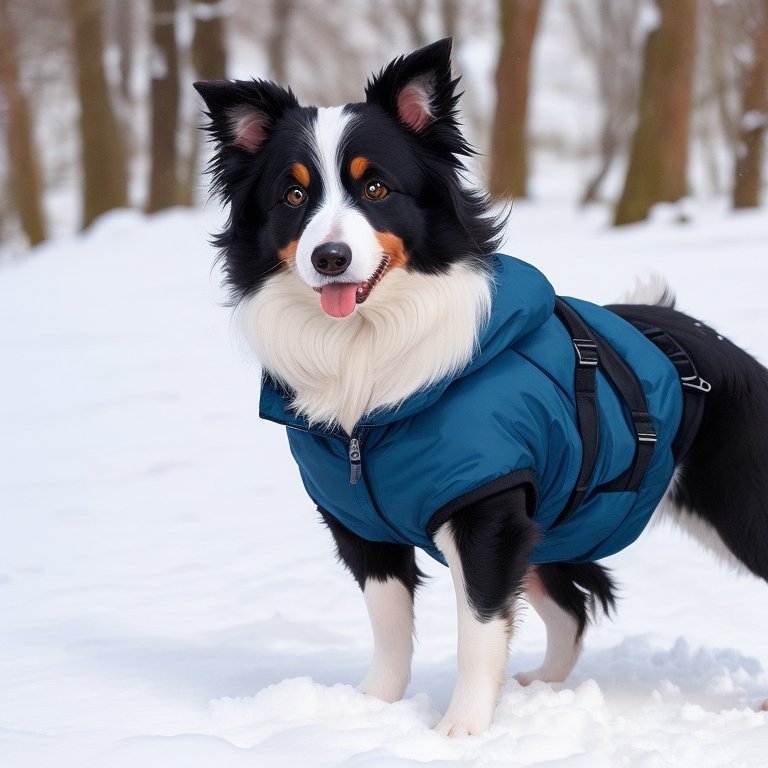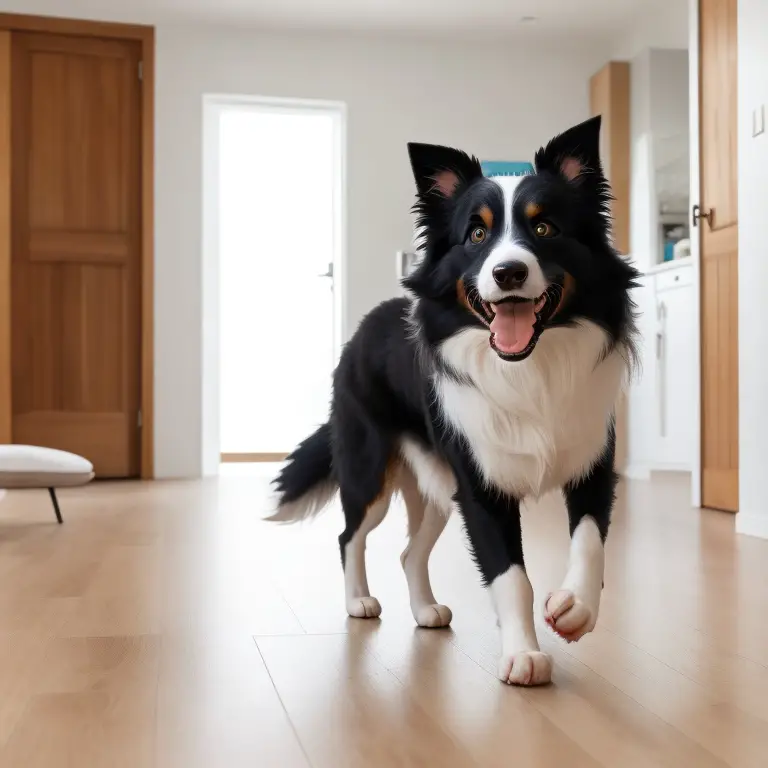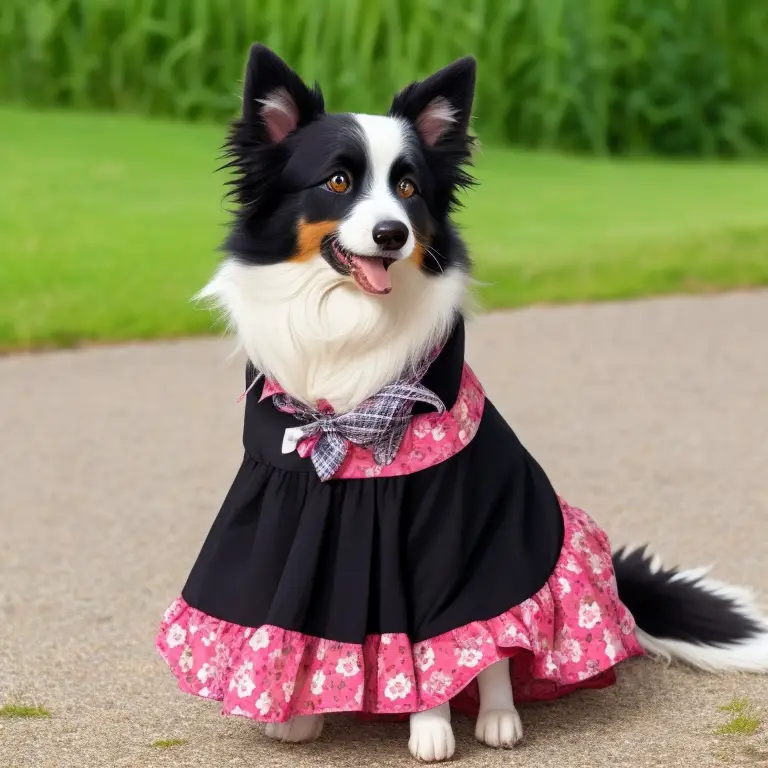How To Prevent Border Collies From Herding Small Animals In The Household?
Are you tired of your Border Collie’s natural herding instincts causing chaos in your household? As a fellow dog owner, I know firsthand how frustrating and overwhelming it can be to navigate this behavior.
Fortunately, there are practical solutions that can help prevent herding behavior and ensure the safety of your small animals.
Let’s dive into some key characteristics of the breed, the physiology of herding, and effective training and socialization techniques. Additionally, we’ll explore special considerations for small animals and underlying issues that may contribute to herding behavior.
Let’s make life with our furry friends a little easier and more enjoyable!
| Method | Description |
|---|---|
| Training | Teach your Border Collie basic obedience commands such as stay, come, and leave it. Practice these commands regularly, gradually adding distractions to the training environment. |
| Redirection | Provide your Border Collie with an alternative activity when they exhibit herding behavior. This can include playing with toys, going for a walk, or doing a training session. |
| Supervision | Always supervise your Border Collie when small animals are present in the household. Use baby gates or crates to keep them separated if necessary. |
| Professional Help | If your Border Collie’s herding behavior persists or becomes aggressive, seek the help of a professional dog trainer or behaviorist. |
Understanding the Herding Instinct in Border Collies
Characteristics of the Border Collie Breed
Border collies are a highly intelligent breed with a strong herding instinct. This drive to herd can be traced back to their history as working dogs on farms.
As a result, these dogs are highly energetic and require a lot of exercise.
Border collies are also known for being very trainable and responsive to commands. They have a strong desire to please their owners and can be highly focused on their tasks.
Due to their herding instincts, border collies may try to herd small animals in the household, such as cats or small dogs.
They may also try to chase after children or bikes. It’s important to understand that this behavior is not aggression, but rather a natural instinct for the breed.
Additionally, border collies can be prone to separation anxiety if left alone for long periods of time.
This can lead to destructive behavior or excessive barking. It’s important to provide these dogs with plenty of exercise and mental stimulation to avoid these issues.
Overall, border collies are a highly active and intelligent breed with a strong herding instinct.
It’s important for owners to understand these characteristics and provide appropriate training, exercise, and stimulation to prevent unwanted herding behavior in the household.
The Physiology of Herding
Border Collies were originally bred to work on farms, especially for herding sheep. The herding behavior is deeply embedded in their genetics and physiology.
When they see a small animal, their instinct to herd kicks in, which can cause them to bark, nip, or chase the animal.
This behavior is primarily driven by two physiological factors: the prey drive and the chase drive. Prey drive is the instinct to hunt and capture prey, and chase drive is the urge to chase after moving objects.
Both of these drives are a part of the Border Collies’ natural predatory behavior.
Furthermore, Border Collies have a high-energy level and a strong work ethic. They need regular exercise and mental stimulation, or their herding behavior could escalate due to boredom or frustration.
Overall, the Border Collie’s physiology plays a significant role in their herding behavior towards small animals.
Understanding this behavior is essential in addressing and preventing it.

Socialization and Training
Socialization and training are essential to manage herding behavior in Border Collies. Starting at a young age, socializing your dog with other animals will help them understand that not every living being is meant to be herded.
Through proper obedience training, you can teach your Border Collie voice and hand commands to distract them from herding behavior when they display it.
Consistent training will help your dog understand when to herd and when not to. Also, training your dog to follow routines and occupy themselves when they don’t have a task to complete is vital in preventing herding behavior in the home.
In summary, proper socialization and obedience training is crucial to prevent Border Collies from herding small animals in the household.

Practical Solutions for Preventing Herding Behavior
Recognizing Signs of Herding Behavior
Recognizing signs of herding behavior in Border Collies can help prevent any issues in the household. Some common signs of herding behavior to look out for include persistently following and staring at small animals, crouching in a stalking or hunting position, and nipping or nuzzling towards small animals.
Additionally, Border Collies may try to herd humans or objects around the house, such as children or furniture.
It is important to recognize these behaviors and take steps to prevent them from escalating. Distractions such as toys or treats can be used to redirect their attention, while providing adequate exercise and redesigning living spaces can also help prevent herding behavior from occurring.
Overall, being aware of the signs of herding behavior and having a plan in place to address it can create a safer and happier household for both your Border Collie and any small animals in the home.

Distracting with Toys or Treats
One practical way to prevent herding behavior in Border Collies is by distracting them with toys or treats. This can be especially useful when the dog starts showing signs of herding behavior like constant barking or nipping.
Toys that can keep the dog busy include chew toys, puzzle toys, and fetching toys.
These will challenge the dog’s instinctive desire to herd and will keep them occupied for extended periods. Also, try using treats that have a strong odor and are high in protein, such as dried meat or liver treats.
These types of treats not only keep the dog distracted but also reinforce good behavior when they focus on the treat instead of herding.
It’s important to note that excessive use of toys or treats may lead to dependency or obesity in the dog. Use it as a temporary solution, especially during training, and gradually phase them out as the dog learns not to herd.

Providing Adequate Exercise
Providing adequate exercise is essential in preventing herding behavior in Border Collies. This breed needs lots of physical activity to keep them stimulated and prevent boredom.
Exercise not only helps prevent herding behavior but also improves physical health and mental wellbeing.
To provide adequate exercise, daily walks, interactive games, and playtime are necessary. Border Collies are intelligent and love to engage in challenging activities such as agility training, fetch, and frisbee.
Engage your Border Collie in activities that are both fun and demanding to burn off extra energy.
Furthermore, mental stimulation is just as important as physical exercise. Teach your dog new tricks, obedience training, or give them puzzle toys to solve.
Mental stimulation will help prevent boredom and reduce the risk of herding behavior.
Providing adequate exercise is a practical and effective solution in preventing herding behavior in Border Collies. Incorporating daily physical activity and mental stimulation not only prevents herding behavior but also improves the health and overall wellbeing of your furry friend.
Redesigning Living Spaces
Redesigning living spaces is a practical solution for preventing herding behavior in Border Collies. Here are some ways to do it:
- Create designated areas: Set up a clearly defined area where your Border Collie can relax and play. Use baby gates or playpens to create this space. This will help establish boundaries and prevent your dog from herding other household pets in the same area.
- Use opaque barriers: If you have a open-concept living space, use opaque barriers to create visual barriers that will prevent your Border Collie from seeing other pets. This will minimize their desire to herd or chase other animals.
- Use furniture to your advantage: Strategically placed furniture can create a physical barrier that will prevent your Border Collie from herding other pets. Use bookshelves or sofas to create visual barriers or keep pets on different levels of the room.
These simple adjustments to your living space can help minimize your Border Collie’s herding instincts and prevent potential conflicts with other household pets.
Special Considerations for Small Animals
Supervising Interactions
When it comes to preventing Border Collies from herding small animals in the household, supervision is key. Always supervise interactions between your Border Collie and small animals to ensure everyone’s safety.
Even if your Border Collie is well-trained and well-behaved, the herding instinct can kick in at any moment.
Keep a close eye on your Border Collie whenever small animals are around, and be ready to intervene if necessary. It’s also important to teach your Border Collie basic obedience commands to help them understand what’s expected of them.
Make sure small animals have a safe space to retreat to, such as a separate room or a crate.
If you’re introducing a new small animal to your household, do so slowly and under close supervision. Remember, Border Collies are highly intelligent and active dogs that need plenty of exercise and mental stimulation.
Providing your Border Collie with plenty of exercise and activities can help reduce their herding instincts and make them less likely to engage in herding behavior around small animals.

Separating Animals
When it comes to preventing Border Collies from herding small animals in your household, separating animals is a crucial consideration. This involves keeping them apart during training and implementation of other practical solutions.
Separating animals can be done through the use of physical barriers such as baby gates, crates, and playpens.
These items can be used to create separate areas for your pets and help prevent them from interacting and potentially engaging in herding behavior. Additionally, supervising interactions between your pets is essential, especially during the early stages of training.
This can help prevent any incidents or accidents that may occur due to the herding tendencies of Border Collies.
It’s important to remember that separating animals is not a permanent solution, but rather a temporary one until you’ve successfully trained your Border Collie to stop herding small animals. By being consistent with their training and implementing other practical solutions, you can ultimately create a peaceful household where all pets can coexist without any issues.
Using Barriers and Crates
To prevent your Border Collie from herding small animals, using barriers and crates can be an effective solution. Barriers, such as baby gates or pet fences, can be used to separate and prevent interactions between your Border Collie and small animals.
Crates can provide a safe space for small animals to retreat to and also prevent physical contact with your dog.
Make sure to supervise any interactions between the two, and do not leave them alone together until you’re confident that your Border Collie has learned to coexist peacefully with the small animals.
Addressing Underlying Issues
Anxiety and Stress
Addressing Underlying Issues: Anxiety and Stress Anxiety and stress can be a major contributing factor to herding behavior in Border Collies. Dogs that are anxious or stressed may feel the need to control and herd their environment to feel more secure.
To address this issue, make sure your Border Collie is receiving enough mental and physical stimulation to help reduce their anxiety levels.
Try providing them with puzzle toys or taking them on more frequent and longer walks. Another strategy is to create a calm and relaxing environment.
Consider playing soothing music or aromatherapy to help reduce stress levels.
You can also try using anxiety-reducing supplements, or speaking with your veterinarian for medication options if deemed necessary. It’s also important to pay attention to your own energy levels.
Dogs are highly attuned to their owners’ emotions, so if you’re feeling tense or anxious, your dog may pick up on that and become more stressed as well.
By addressing underlying anxiety and stress, you can help prevent herding behavior in your Border Collie.
Boredom and Overstimulation
Boredom and overstimulation are two significant underlying factors that can trigger herding behavior in Border Collies. When a dog is bored, it may resort to herding small animals to release pent-up energy.
Likewise, overstimulation can cause a dog to feel overwhelmed, leading to herding as a coping mechanism.
To prevent boredom and overstimulation, it’s essential to provide your Border Collie with enough physical and mental stimulation. Engage your dog in regular exercise, playtime, and training sessions.
Puzzle toys and interactive games are also great ways to keep your dog’s mind occupied.
On the other hand, it’s crucial not to overstimulate your Border Collie. When the dog starts to show signs of exhaustion, such as restlessness, panting, and over-excitement, it’s time to give them a break and some downtime.
Boredom and overstimulation can significantly contribute to a Border Collie’s herding behavior.
To prevent these issues, provide enough physical and mental stimulation while avoiding over-stimulating the dog.
Health Concerns
When it comes to addressing the underlying issues behind your Border Collie’s herding behavior, it’s important to consider possible health concerns. Health issues like arthritis, joint pain, or other chronic illnesses can cause discomfort and may lead to anxiety or restlessness in your dog.
Regular check-ups with your veterinarian can help identify any underlying health issues and treat them accordingly.
Adequate nutrition and proper exercise can also promote good overall health and prevent potential health concerns. It’s important to prioritize your dog’s health and well-being to ensure the best quality of life for your pet.

Conclusion
Understanding the herding instinct in Border Collies, recognizing signs of herding behavior, providing adequate exercise and socialization, and redesigning living spaces are practical steps that can prevent your Border Collie from herding small animals in the household. It is crucial to supervise interactions between your Border Collie and other animals, as well as addressing underlying issues like anxiety, stress, boredom, and health concerns.
Preventing herding behavior is essential not only for the safety of other household pets but also for the overall well-being of your Border Collie.
Seeking professional help when necessary can also be beneficial. By implementing these preventative measures, you can ensure a harmonious and safe living environment for all animals in your household.







